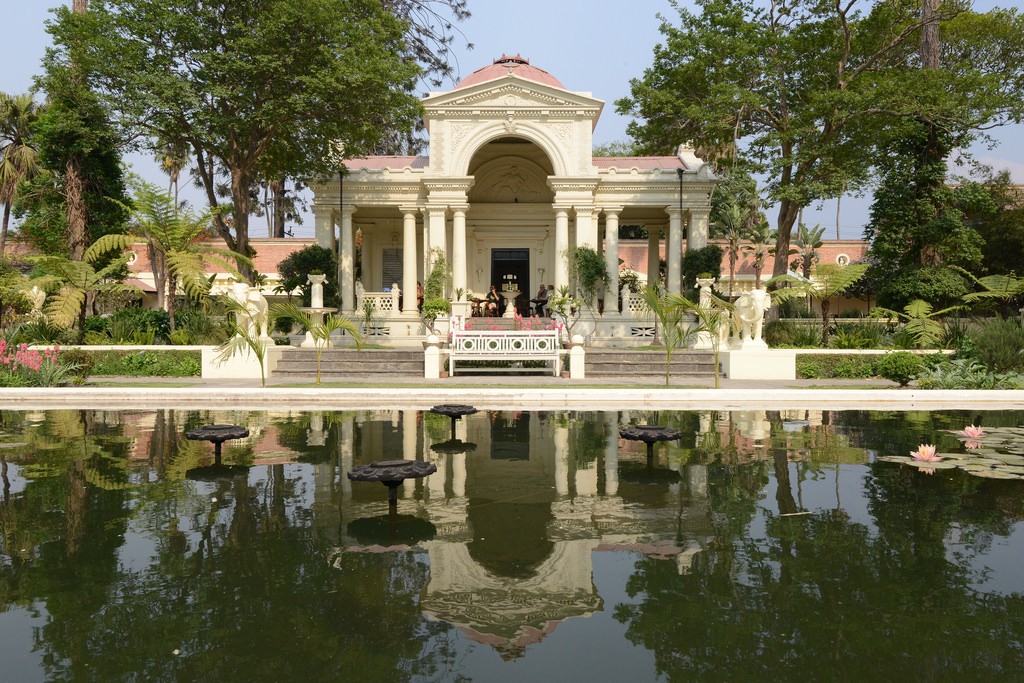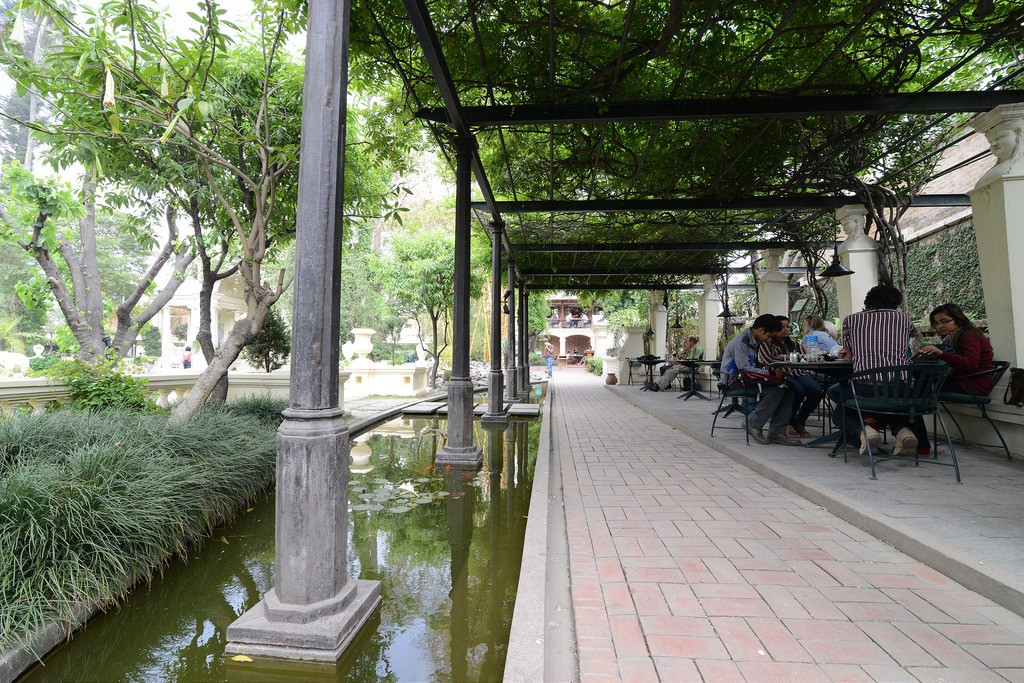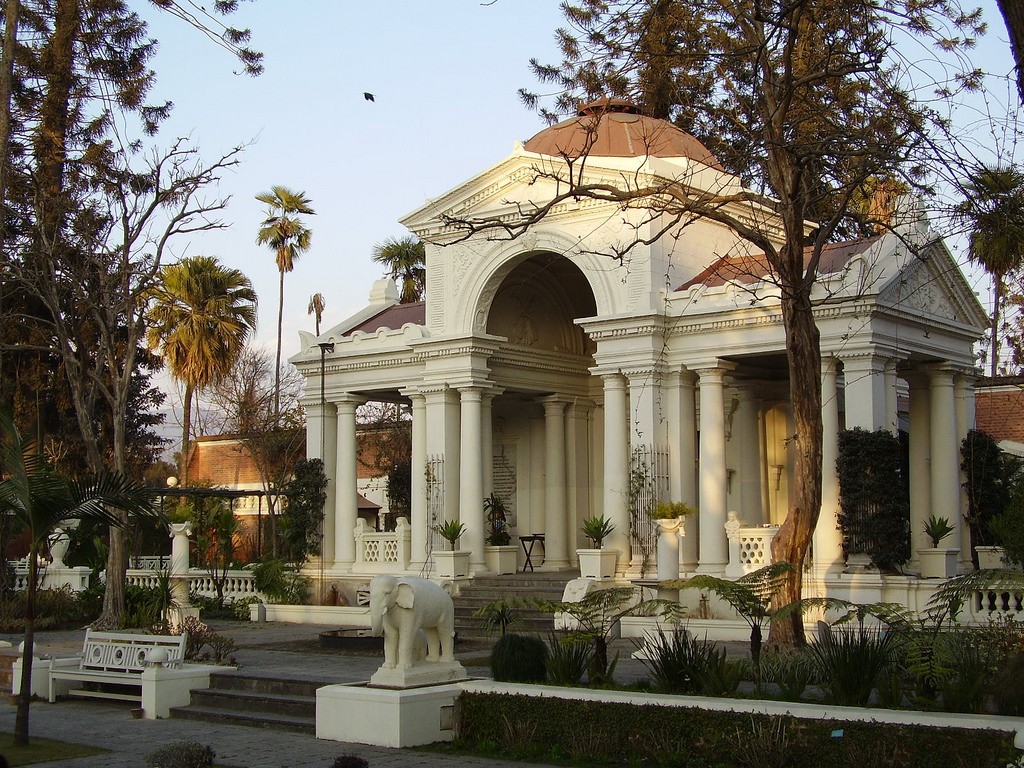Nepal is home to several of the significant monuments which are a real treasure in the world and is even in the list of World Heritage List. The glorious mountain peaks, ancient and historical places, distinctive culture and tradition, rich biodiversity and unique topography drives people from all around the world to Nepal. With the added feature of adventure-hub, Nepal is visited by millions in a year. Trekking, paragliding, mountain climbing, skydiving, and rafting are some popular adventure activities.
Apart from all the major attractions in Nepal, there are several places which might not come in the highlight, but they are places you must visit. Garden of Dreams is one of such places, which may not be the center of the journey to Nepal, but a must visit the place once you arrive here. It is one of the beautiful and peaceful places of the Kathmandu with a history in itself. With its historical design and updated modern amenities; Garden of Dreams has become a tourism landmark in Kathmandu.
About Garden of Dreams
Garden of Dreams which is also called the Garden of Six Season is one of the popular places inside the Kathmandu valley. The Garden is translated in Nepali as Swapna Bagaicha. It is a neo-classical garden in Kaiser Mahal, Kathmandu, which was originally built in 1920. Garden of Dreams is spread in the area of 6,895 square meters (74,220 square feet). The garden was neglected after the death of its patron, Kaiser Sumsher Rana in mid-1960s but it got restored with the help of the Austrian government.
Know more about the Garden of Six Seasons: Garden of Dreams
And, talking about the devastating earthquake of April 2015, the garden suffered very less damage compared to the other monuments of Nepal.
Location of Garden of Dream
Garden of Dreams is located in the very center of Kathmandu. This beautiful garden is located at the entrance of the tourist hub, Thamel. You can visit the Garden of Dreams and enjoy the tranquility of the soothing environment. The Garden is open all day for the week. It opens at 9 AM and closes at 10 PM. It charges a small charge of NPR.200/- for non-Nepali citizens and small children and older citizen, they offer a 50% discount on the charge.
Why is the Garden of Dream Special?
Kathmandu is the center of Nepal where all the facilities and infrastructures have been centralized, which has caused the place with the highest population. You might want to take time to go somewhere away from the crowd and smog of the city. Garden of Dreams will be your ideal choice if you are looking for some moment of peace within the city. Located in the heart of Kathmandu and the entrance of famous tourist, Thamel, Garden of Dreams won’t be very hard to access.
Garden of Dreams is an oasis of tranquility. Although this place is not far from the city, you can get lost in its serene environment. Recognized as one of the favorite destination of locals as well as tourist, this garden is the perfect gateway to hangout yourself or with your friends and family.
Garden of Dreams is very popular among the youths of Kathmandu. With crowded areas and street full of pedestrians in the city, Garden of Dreams has gained its popularity because of its serene environment. It is mostly favored by young couples who are looking for a quiet place to get to each other. The family also visits the garden with children to have some family time where children can run and play, and parents could not fear of child running into any vehicles. This place is also visited by groups of friends especially college girls, to enjoy the peaceful environment and click some pictures of this beautiful place.
With the beautiful pavilions, amphitheater, pergolas, ponds and fountain and perfectly manicured gardens, the Garden of Dreams feels like a small piece of heaven. The flora of the garden is rich and unique which are from different countries. The design of the garden is impressive with a large pond in the center, marble inscription, and historical palace in view.
You can find enough places to sit or lay in the Garden of Dreams. It will be even best if you bring your favorite book so you can read in the quiet and perfect environment. You can also tour the garden area and witness its distinctive design and work. You can visit the garden during the summer and rest in the shade of trees, pavilion, and pergolas. It will be even best in winter when you can take sunbathe, read a book and have a little picnic of your own.
Apart from the garden, there is also Kaiser Café, which is operated by Nepal’s only boutique heritage group, the Dwarika group. Kaiser Café and Bar offers you the perfect cup of coffee and continental menu, which you can enjoy while witnessing the serene atmosphere and beauty of the garden. Garden of Dreams has become very popular in these recent years, and now they welcome private and corporate functions, receptions, cultural programs, and classical concerts too.
History of Garden of Dreams
Garden of Dreams is in Kaiser Mahal, which is across the street of the former Royal Palace of Nepal at the entrance of Thamel tourist area. The garden was made famous as the Garden of Six Season, which was created for Field Marshal Kaiser Sumsher Rana in early 1920s. The Garden features a design inspired by the Edwardian style, which was considered as one of the most sophisticated private gardens of that time. Garden of Dreams was designed by landscape architect Kishore Narshingh, who was also the designer of Singha Durbar and architect to Shumsher’s father. He also supervised the construction of the whole garden.
The Garden was built with pavilions, fountain, decorative garden furniture and European-inspired features like verandas, pergolas, balustrades, urns, and birdhouse. The each of the six pavilion of Garden which gives the architectural framework to the Garden is dedicated to one of the six seasons in Nepal, which are Basanta (spring), Grishma (summer), Barkha (monsoon), Sharad (early autumn), Hemanta (late autumn) and Shishir (winter). Garden of Dream was handed to the Government of Nepal, after the death of Kiser Sumsher. But, the government didn’t take care of the garden until the Austrian government supported to rebuild it. Now, only the half of the original garden remains.
Anything About Garden of Dreams? Feel free to Contact
Reconstruction of Garden of Dreams
The garden neglected for decades and it caused crumbling pavilion, overgrown paths, and the garden ultimately lost the subtropical flora. In 1998, Nepal celebrated visit Nepal Year 1998; it was then when the structural disfigurement caught the sight of national as well as international environmentalists and heritage conservation. For the awareness regarding the preservation of heritage within the metropolis, the plan to preserve the garden continued until 2001, when a million-dollar project was born and funded by Austrian Development Aid (Austrian Government) in collaboration with the Nepal Ministry of Education. The renovation project of the garden was finally completed in 2007 and was open to the public, including both nationals as well as internationals.
The renovation project of the garden, which was executed by Eco Himal, has become a model project for the sustainable development of other historic sites too. About its design and literary allusions, the garden is linked to the collections of books about gardening, architecture, and literature in Kaiser Shumsher’s library. The garden has been updated with additional modern facilities as well.
Although the garden was renovated, the spread area has cringed from its original make. The garden was about 10,000 square meters, but now it is only 6,895 square meters. Also, the three pavilions in the western part of the garden have been encroached by urban expansion, along with some of the structural fragments. However, the central and eastern section of the garden has remained unchanged. Those sections are the focal fountain pool, a myriad of original details and fragments of the original planting scheme.
The garden is very beautiful and needs every bit of care. The entrance fee acts as a self-sustaining program to maintain the standard of the garden. Also, cafe, bar, and other cultural programs, events, and functions also support maintaining the standard of the garden. Garden of Dreams is a non-commercial area, which keeps the area free from any advertisement, banners or posters; this step was taken to keep up the architectural beauty of the garden.











